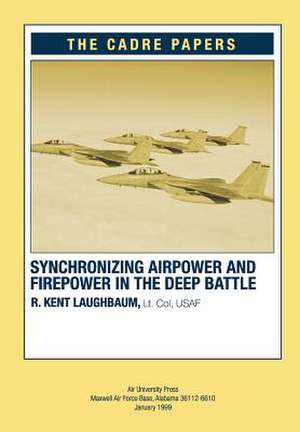Synchronizing Airpower and Firepower in the Deep Battle
Autor Lt Col Usaf R. Kent Laughbaum Contribuţii de Air University Press, Air University Pressen Limba Engleză Paperback
Preț: 94.92 lei
Nou
Puncte Express: 142
Preț estimativ în valută:
18.16€ • 19.42$ • 15.14£
18.16€ • 19.42$ • 15.14£
Carte disponibilă
Livrare economică 27 martie-10 aprilie
Preluare comenzi: 021 569.72.76
Specificații
ISBN-13: 9781479282548
ISBN-10: 1479282545
Pagini: 92
Dimensiuni: 170 x 244 x 5 mm
Greutate: 0.16 kg
Editura: CREATESPACE
ISBN-10: 1479282545
Pagini: 92
Dimensiuni: 170 x 244 x 5 mm
Greutate: 0.16 kg
Editura: CREATESPACE
